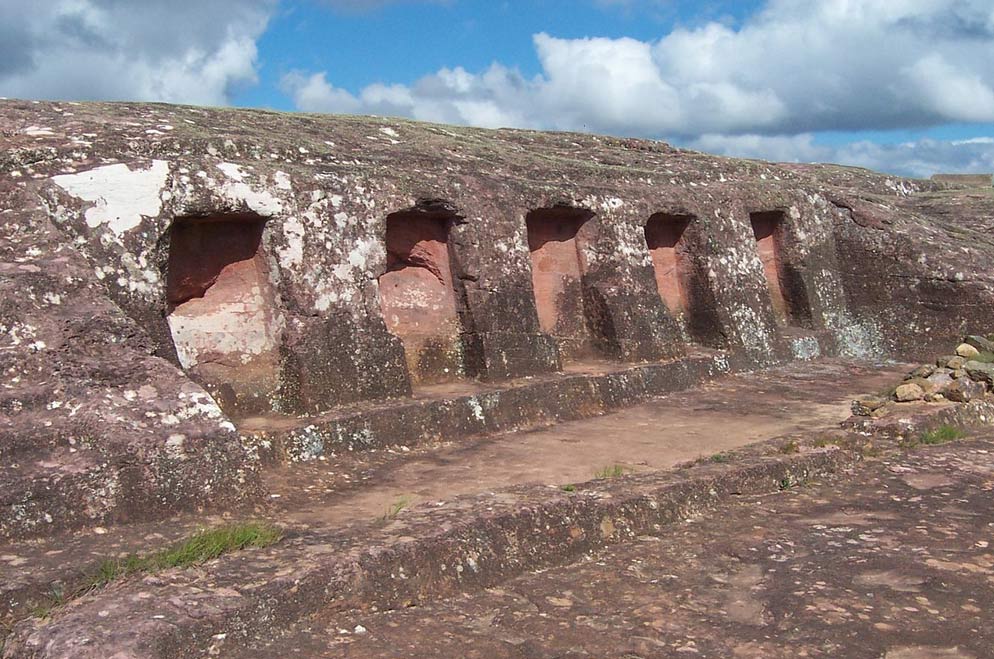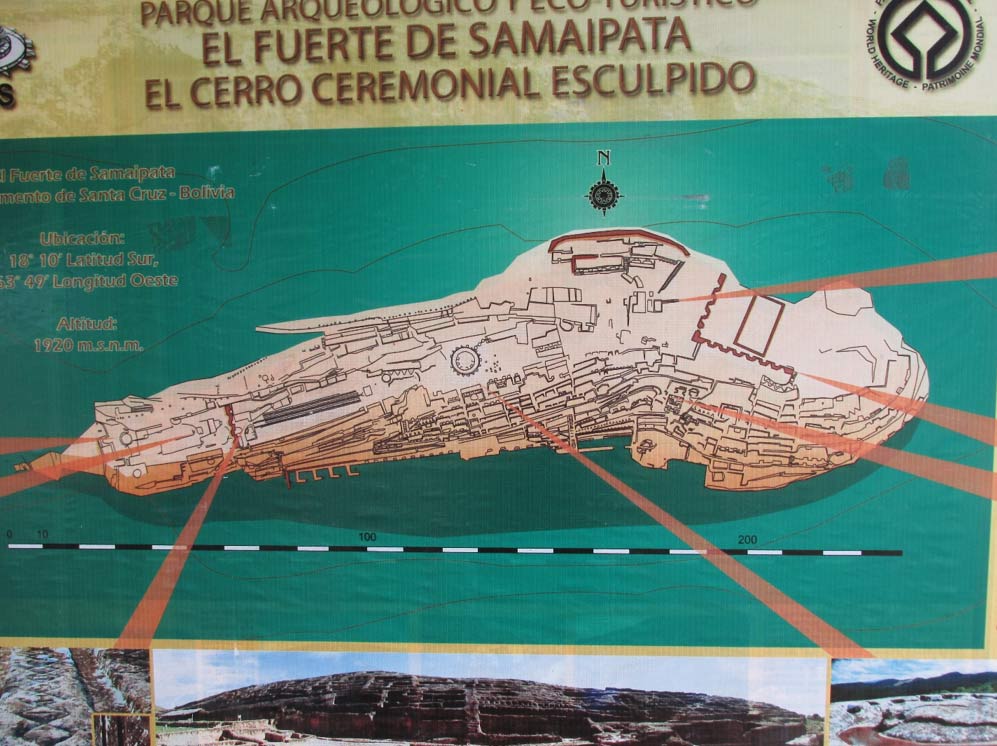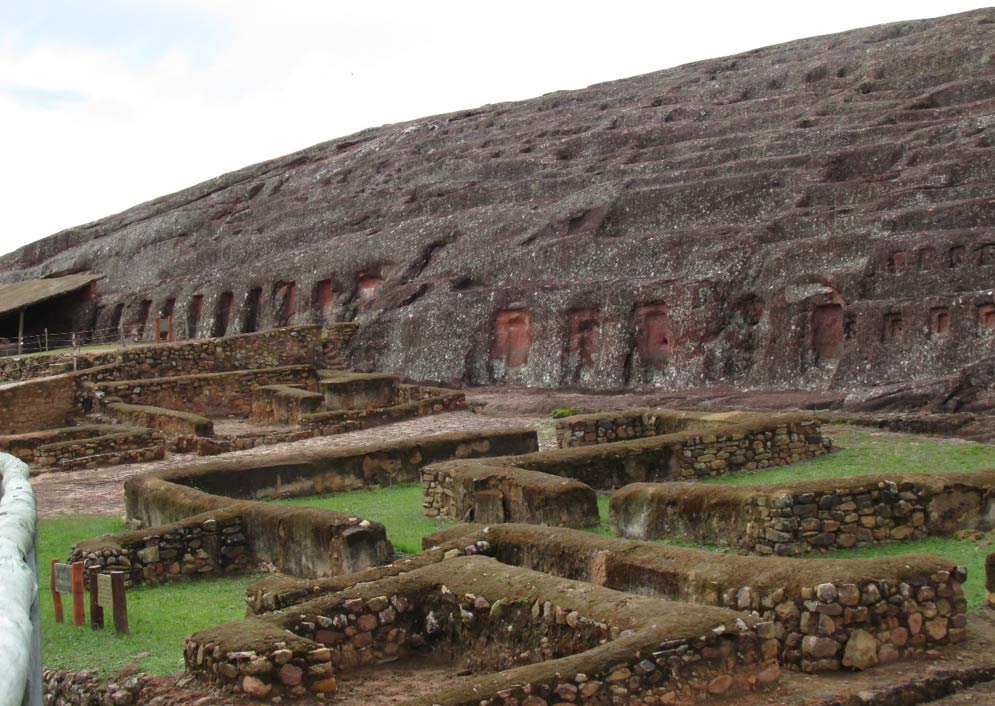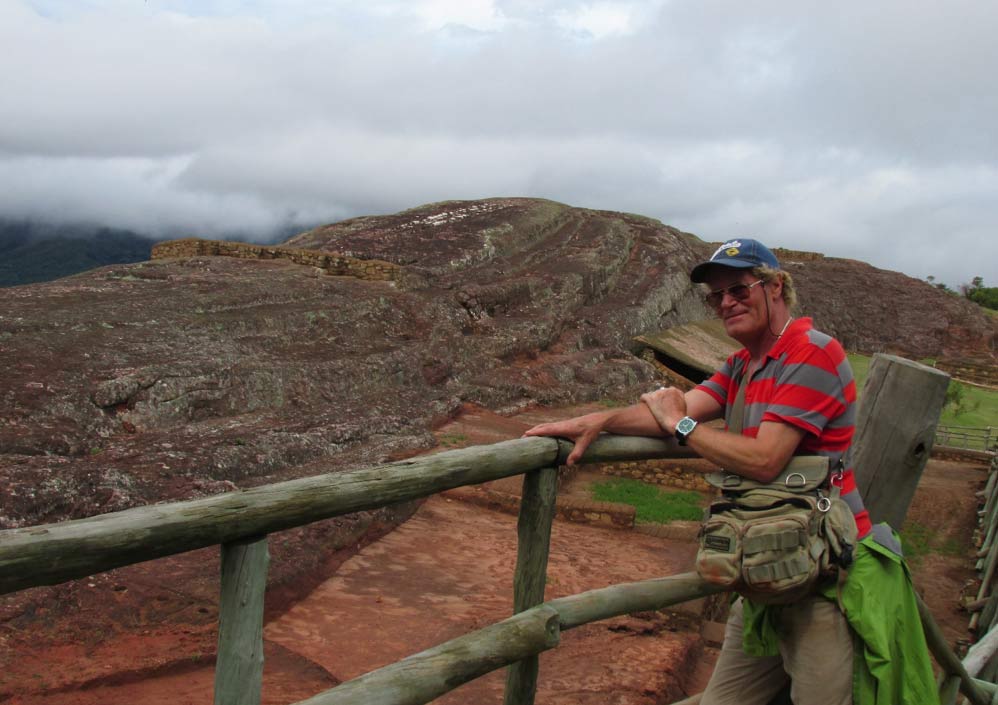
El Fuerte: The Mysterious Archaeological Site of Samaipata in Bolivia
Located in the Province of Florida, Department of Santa Cruz, the archaeological site of Fuerte de Samaipata consists of two clearly identified parts; the hill with its many carvings, believed to have been the Ceremonial Center, and an area to the south of the hill, which formed the administrative and residential district and the political administration.

An overview map of Samaipata in Bolivia.
The site is known to have been occupied and used as a ritual and residential center by people belonging to the Mojocoyas culture from the Amazon basin to the east as early as 300 AD, and it was at this time, archaeologists contend that work began on the shaping of this great rock. It was later occupied in the 14th century by the Inca, who made it a provincial capital. The latter is confirmed by the features that have been discovered by excavation; a large central plaza with monumental public buildings around it and terracing of the neighboring hillsides for agriculture; which are characteristic of this type of Inca settlement seen especially in the highlands of Peru. It formed a bulwark against the incursions of the local indigenous and warlike Chiriguanos of that region in the 1520s.
The strategic location of the site, which had attracted the Inca to it, was also recognized by the Spaniards. The silver mines of the Cerro Rico at Potosí began to be worked in 1545 and the colonial settlement of Samaipata became an important staging post on the highway from Asunción and Santa Cruz to the colonial centers in the High Andes such as La Plata (modern Sucre), Cochabamba and Potosí. With the establishment of the new town of Samaipata in the Valle de la Purificación, the ancient settlement had no further military importance and was abandoned.
- Archaeologists Find Underground Pyramid at Tiahuanaco in Bolivia, Excavations Planned
- The Ancient Ruins On and Beneath the Sacred Lake Titicaca
- Fuente Magna, the Controversial Rosetta Stone of the Americas

Inca works in the foreground at Samaipata.
The Ceremonial Center consists of a huge monolithic rock of red sandstone of dimensions 220 meters (721 feet) long and approximately 60 meters (197 feet) wide, fully sculpted with a variety of representations of animals, geometric shapes, alcoves and channels, executed by specialist craftsmen, sculptors, with great skill and mastery of the material. However, archaeologists again presume this initial work was done by the relatively primitive Mojocoyas culture of the Amazon, yet seemingly have no evidence of such works having also been created in their homeland. This monument, dominating the town below, is one of the most colossal ceremonial pre-Columbian works of the Andes and the Amazon regions.

The author and a red sandstone outcrop.




